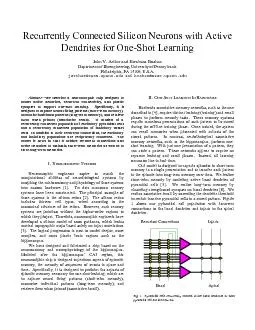PDF-Department of Bioengineering, University of Pennsylvania Philadelphia,
Author : kittie-lecroy | Published Date : 2015-10-06
Fig 1 Pyramidal cells recurrently connect to the basal dendrites of othe r p yramidal cells in the network Basal Apical Recurrent Connections Inputs A Phase Code
Presentation Embed Code
Download Presentation
Download Presentation The PPT/PDF document "Department of Bioengineering, University..." is the property of its rightful owner. Permission is granted to download and print the materials on this website for personal, non-commercial use only, and to display it on your personal computer provided you do not modify the materials and that you retain all copyright notices contained in the materials. By downloading content from our website, you accept the terms of this agreement.
Department of Bioengineering, University of Pennsylvania Philadelphia,: Transcript
Download Rules Of Document
"Department of Bioengineering, University of Pennsylvania Philadelphia,"The content belongs to its owner. You may download and print it for personal use, without modification, and keep all copyright notices. By downloading, you agree to these terms.
Related Documents














